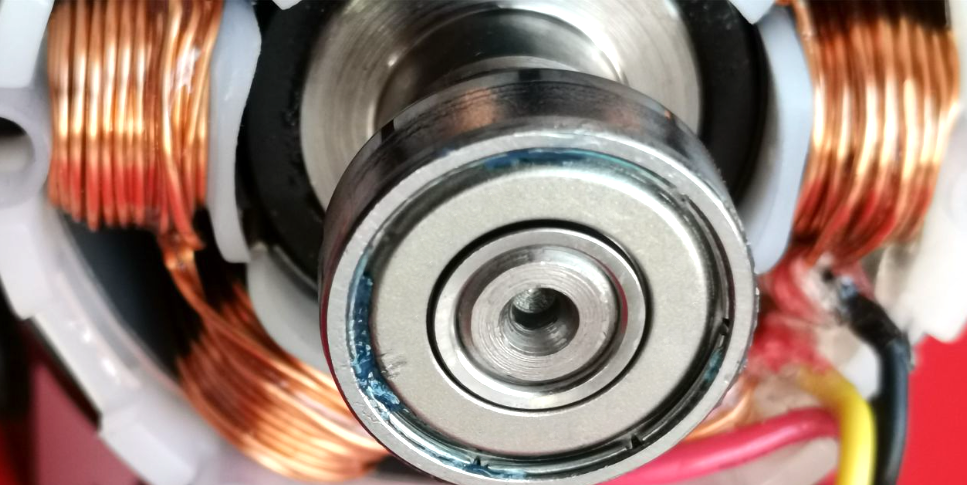What are the common mechanical failures and solutions for brushless motor motor automatic rotor bearing press-in machine?
Brushless motor motor automatic rotor bearing press-in machine in the process of long-term use, there may be all kinds of mechanical failure, the following for you to introduce the details of common failures, causes and corresponding solutions:
1、Press fitting precision problem
l Fault phenomenon
The depth of bearing press-in is inaccurate, too deep or too shallow, affecting the performance of the motor.
The coaxiality between the bearing and the rotor after pressing in is too poor, resulting in vibration and noise when the motor is running.
l Failure causes
The positioning device is worn or loose, making the positioning of rotor and bearing inaccurate before press-fitting.
Wear or deformation of the press head, which is unable to apply pressure uniformly, resulting in deviation of the bearing when press-fitting.
Insufficient rigidity of the mechanical structure, deformation occurs during the press fitting process, affecting the precision of press fitting.
l Solution
Regularly check and maintain the positioning device, replace the worn parts and tighten the loose connection parts.
Check the wear and tear of the press head, replace the press head if necessary, and ensure the mounting accuracy of the new press head.
Evaluate and reinforce the mechanical structure to improve its rigidity and reduce the deformation during press fitting.

2、Abnormal press fitting force
l Failure phenomenon
The press fitting force is too large, which may cause damage to the bearing, rotor or press-in machine itself.
If the press fitting force is too small, the bearing cannot be pressed into the specified position completely, resulting in unsound installation.
l Cause of Failure
Failure of the hydraulic system, such as wear of the oil pump, clogging of the oil pipe, improper adjustment of oil pressure, etc., resulting in unstable pressure.
Wear and tear of mechanical transmission parts, such as screw nut vice, gear transmission, etc., which increases the transmission resistance and affects the transmission of press-fitting force.
Bearing and rotor fit too tight or too loose, do not meet the design requirements.
l Solution
Check the hydraulic system, clean or replace the oil pump, oil pipe and other components, adjust the oil pressure to the appropriate range.
Check and lubricate the mechanical transmission parts, replace the parts with serious wear to ensure smooth transmission.
Check the bearings and rotor with the size, if necessary, replace the bearings to meet the requirements or repair the rotor.
3、Moving parts jamming or abnormal noise
l Fault phenomenon
The moving parts of the press-in machine, such as the slider, guide rail, etc., appear to be stuck during operation, affecting work efficiency.
Abnormal noise generated by moving parts may indicate wear or damage to the parts.
l Cause of trouble
There are impurities and iron filings on the surface of the guide rail and slider, which prevent the moving parts from sliding normally.
Insufficient lubrication, resulting in increased friction between moving parts.
The installation precision of the moving parts is not enough, such as the parallelism of the guide rail is too poor, the gap between the slider and the guide rail is not suitable, and so on.
l Solution
Clean the impurities on the surface of the guide rail and slider, use compressed air or cleaner to clean.
Add lubricant to the moving parts according to the specified lubrication period and lubrication method.
Re-adjust the installation accuracy of the moving parts to ensure that the parallelism of the guide rail and the gap between the slider and the guide rail meet the requirements.
4、Fixture failure
l Failure phenomenon
The fixture cannot firmly clamp the rotor or bearing, and loosening occurs in the process of press fitting, resulting in deviation of press fitting position.
The opening and closing action of the fixture is not smooth, which affects the working efficiency.
l Cause
The clamping force of the fixture is insufficient, which may be caused by the wear of the cylinder or the weakening of the spring elasticity.
Damage to the mechanical structure of the fixture, such as wear and tear of the clamping jaws, broken connectors, etc.
Failure of the driving mechanism of the fixture, such as motor failure, drive belt slackness, etc.
l Solution
Check the driving parts of the fixture, such as cylinders, springs, etc., replace or repair the worn parts, and adjust the clamping force to the appropriate value.
Repair or replace the damaged mechanical structure of the fixture to ensure the accuracy of the clamping jaws and the reliability of the connecting parts.
Check the drive mechanism of the fixture, repair or replace the faulty motor, adjust the tension of the drive belt.
5、Loose mechanical structure
l Fault phenomenon
The overall vibration of the press-in machine increases during operation, and there is obvious shaking.
Loosening of mechanical connection parts, such as bolts and nuts, may lead to displacement or damage of parts.
l Cause
Long-term vibration and impact loosen the bolts and nuts in the mechanical connection parts.
The foundation is not solid when the equipment is installed, causing the equipment to shake during operation.
l Solution
Regularly check and tighten the bolts and nuts of the mechanical connection parts, and use suitable tools to tighten them according to the specified torque.
Check the installation foundation of the equipment, and if necessary, re-strengthen or adjust it to ensure that the equipment is firmly installed.
※ If you still can not solve the problem by the above ways and means, please contact the technical specialist of Xinhui Mechanical & Electrical Equipment Co.







